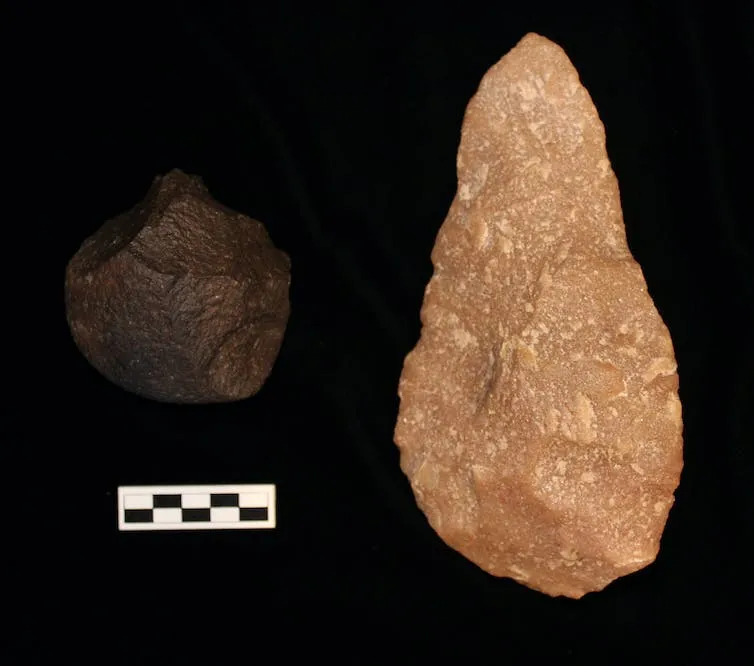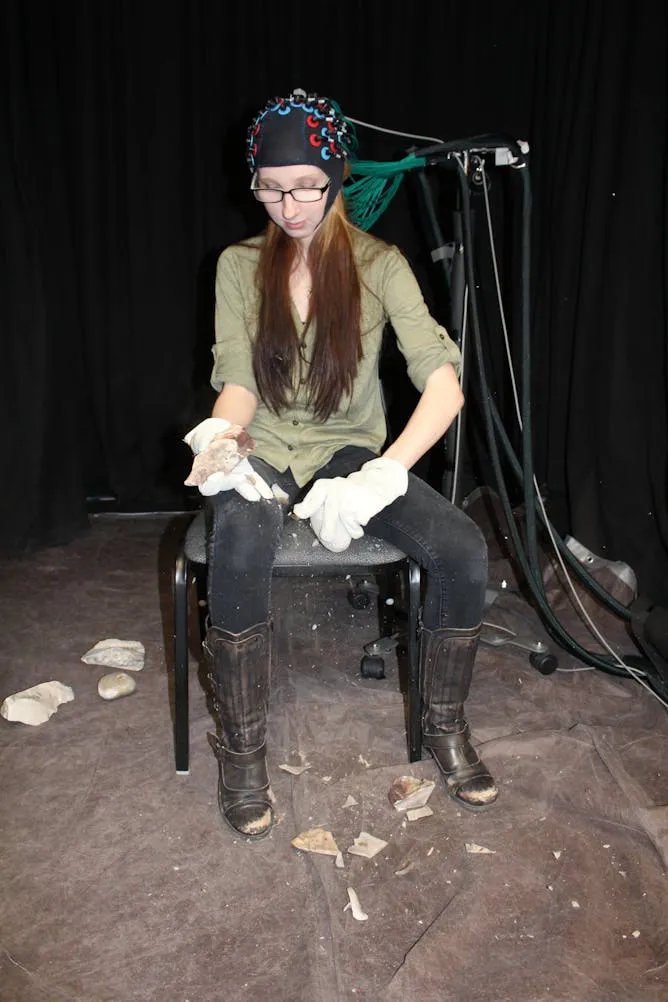We have been picking up discarded tools for millennia and there is even signs of recycling in the archaeological record.
Where good tool making material is scarce its not uncommon to find older tools that have been remade into new tools. Sometimes there may be hundreds of thousand, even millions of years between the time the first tool was discarded and then picked up and remade into something else.
It doesn't take a rocket scientist to figure out that there is quite a huge difference in the level of skill, dexterity and brain power required to manufacture the tool on the right in comparison to the tool on the left.
The one on the left (Oldowan) is a pebble that has been crudely bashed on one side to produce a simple sharp edge.
The one on the right (Acheulian) has been carefully planned and worked to produce a flattened instrument with a fine cutting edge all round the perimeter of the stone.

There must have been some fantastic advancements to enable the latter tools to be manufactured.
Up till now its simply been educated guesswork as to how this occurred and which homonin species is responsible for these, since there are a couple of overlaps.
Through lots of effort we modern humans have been able to reverse engineer how these tools were created, partially by trial and error and partly by observing and copying peoples that still manufacture stone age tools today.
But to figure out what is really going on brain imaging is being brought on. Participants are having their brain activity levels and areas monitored while they manufacture modern equivalents. This enables researchers to see exactly what areas of the brain were required to manufacture tools and what areas would have been stimulated by these repetitive processes.
Language was thought by previous studies to be key.

Each of the subjects who participated in this study attended multiple training sessions to learn how to make Oldowan and Acheulian tools before going in for the final test – making tools while hooked up to the fNIRS system.
We needed to control for language in the design of our experiment to test the idea that language and tool-making share a common circuit in the brain. So we divided the participants into two groups: One learned to make stone tools via video with language instructions; the other group learned via the same videos, but with the audio muted, so without language.
If language and tool-making truly share a co-evolutionary relationship, then even those participants who were placed in the nonverbal group should still use language areas of the brain while making a stone tool. This is the result we should expect if language processing and stone tool production require the same neural circuitry in the brain.
What we found was that only the participants who learned to make stone tools with language instruction used language processing areas of the brain. This probably means that they were recalling verbal instructions they’d heard during their training sessions. That explains why earlier studies that did not control for language instruction in their experiment design found that stone tool production activates language processing areas of the brain. Those language areas lit up not because of anything intrinsic to making stone tools, but because while participants worked on the tools they also were likely playing back in their minds the language-based instruction they’d received.
Our study showed that people could make stone tools without activating language-related brain circuits. That means, then, that we can’t confidently state at this point that stone tool manufacture played a major role in the evolution of language. When exactly language made its appearance is therefore still a mystery to be solved.